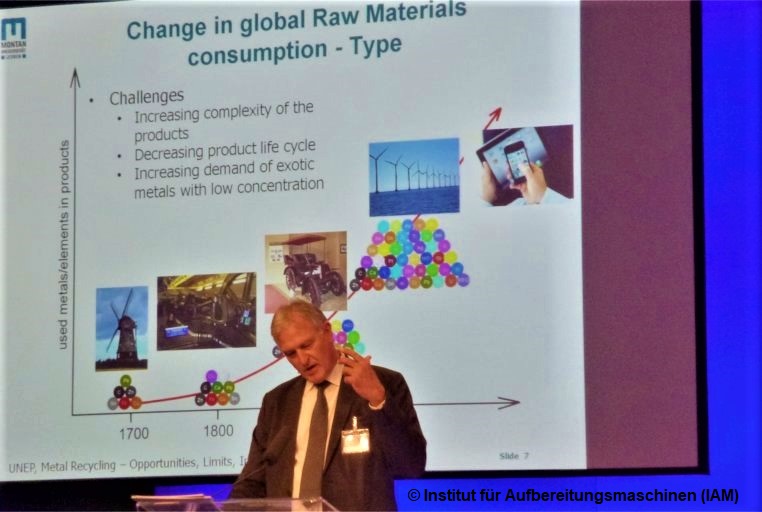
“What is renewable in renewables? Just the wind and the sun.”
This is how Prof. Peter Moser, Vice Rector for Infrastructure and International Relations and Head of the Chair of Mining Engineering and Mineral Economics at the University of Leoben for Mining, Metallurgy and Materials, today answered his own question.
Solar cells, wind turbines, etc. must still be produced out of raw materials – and to a considerable extent from primary raw materials! The selection of materials required to this end is usually much more complex than it is the case with conventional power plants.
For the Rare Earth Elements (REE) and other important raw materials, large quantities of ores have to be mined and processed, often in conjunction with predatory nature exploitations due to the sometimes minute amounts in the ores.
According to an estimation by Associate Professor Glen Corder, Acting Director of the Environmental Center at the Sustainable Minerals Institute of the University of Queensland, Australia, copper consumption will increase from currently approx. 20 million tons annually to approx. 50 million tons per year by 2050, with continuously declining copper levels in the deposits!
This compares with a relatively short lifespan of photovoltaic cells and wind turbines of 15 to 20 years. For comparison: Coal-fired power plant blocks usually have a lifetime of 40 to 50 years!
The challenges for the future energy mix arising from these conditions – taking into account the associated ecological footprints – will continue to shape the discourse in science, business, politics and society. Furthermore, they will offer interesting career prospects for future engineering graduates of the TU Bergakademie Freiberg who have specialized in mineral processing machines!
